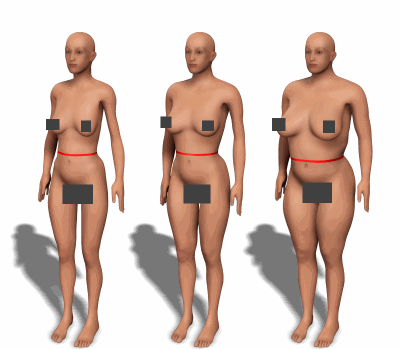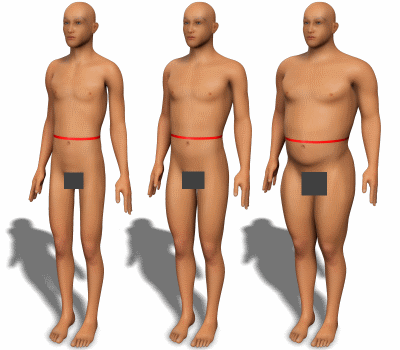Waist Circumference
Waist Circumference (also known as stomach circumference) can be by itself an important parameter for determining the risk of secondary disease due to obesity.
Waist circumference for women with different body types. The red line shows the waist circumference.

waist circumference for men with various body types. The red line shows the waist circumference.
Correctly measure waist circumference:
- unclothed
- in the morning before breakfast
- just above the belly button at the widest point
- relax stomach muscles
- breathe out but do not pull in stomach
- round up to a full centimeter
Study 1
The results are astounding: A waist circumference greater than or equal to 94 cm in men or 80 cm in women is more than 95% associated with a high BMI or an unfavorable waist to hip ratio. That is, the persons concerned have a BMI over 25 or, for those with a BMI under 25, a waist-hip ratio or equal to 0.95 in men and 0.80 in women. Both are signs of an increased risk of complications from being overweight.
As a result, this means that in most cases, the waist circumference alone is just as good a means of risk assessment as body mass index and waist to hip ratio together.
The study recommends a waist circumference in men of less than 102 cm, where at 94 cm there is already a slightly increased risk. Women should have a waist circumference below 88 cm and at 80 cm, a slightly increased risk can be expected.
The study can be read here:
Waist circumference as a measure for indicating need for weight management.